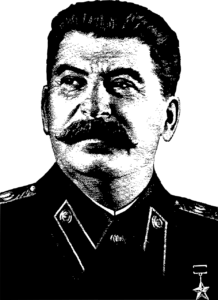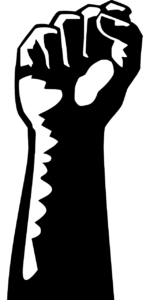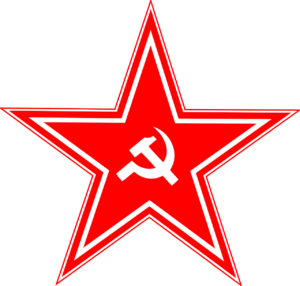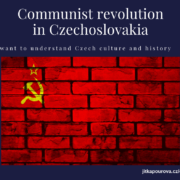Communist revolution in Czechoslovakia
On the 25th of February, it was a day that some people have still been remembering. The communist revolution passed off. From that day Czechoslovakia became a communist country and nothing changed for the next 41 years.
Communist revolution
How did it happen?
The communist coup in Czechoslovakia didn´t start without reason. We can find it in the period before World War II. Let´s have a look.
The 30s of the 20th century
In the ’30s, Adolf Hitler became a German Chancellor. He wanted Czechoslovakia to give Germany the regions around its borders (we call them Sudety) where Germans lived. He threatened the war when Czechoslovakia didn´t give him these regions. France and Great Britain agreed with Hitler, they wanted to avoid a war. Czechoslovakia stayed alone, its army was small and no other country wanted to help to fight.
On the 30th of September 1938, Czechoslovakia capitulated. Germany took over Sudety. And that was the end of Czechoslovak autonomy (until 1945). In 1938, Slovakia separated. Hitler wanted the rest of the country soon – on the 15th of March 1939 German occupation started. Czechoslovakia didn´t exist anymore, the Protectorate of Bohemia and Moravia was founded and lasted until the end of the war. Czechoslovak democratic government and president Edvard Beneš emigrated.
The war

Edvard Beneš
Edvard Beneš, Czechoslovak exile president in England, tried to negotiate with the USA, GB, and the Soviet Union (SU). He wanted them to accept Czechoslovakia in its previous borders after the war. England and the USA waited for the end of the war and didn´t want to predict. The Soviet Union agreed and in 1943, E. Beneš and Josif V. Stalin, the SU leader, signed a contract about cooperation and help in and after the war for the next 20 years. It was a standard international pact but the SU used it as permission to interfere in Czechoslovak politics.

Josif V. Stalin
In May 1945, the war finished. Czechoslovakia was liberated by Americans and Russians. On the 6th of May, the US army came to Pilsen and stopped there – there was a demarcation (a result of negotiations among the USA, GB, and SU). A SU sphere started there. Germans surrendered in Prague on the 8th of May.
After the war
After the war, democratic Czechoslovakia was re-created. Edvard Beneš became president again, several political parties were founded. In 1946, elections took place: the communists won with 40 % and Klement Gottwald, the communist leader, became prime minister.
Europe was destroyed in the war. The USA prepared a plan how to help: the Marshall plan. It was a huge financial help. Western Europe accepted it. The Soviet Union refused, it was worried about massive US influence and power in Europe. It started to argue against „imperialistic“ states, too. And this was a pattern for other countries with communist governments (in central and Eastern Europe). Czechoslovakia wanted to accept the Marshall plan but finally refused as well. The SU authority had become bigger and bigger.
The Communist revolution in February 1948
Czechoslovak communists had a huge influence on politics. Government members – who were not communists – didn´t agree with this situation and protested at president Beneš. They wanted new elections and resigned. But K. Gottwald also tried to persuade the president – of a fact about how many people supported communists. He wanted the non-communist ministers to leave the government. Finally, on the 25th of February 1948, the president agreed with Gottwald and accepted the minister’s resignation. The government was set up completely by communists. And a lot of Czechs and Slovaks supported them. The communist revolution passed off.
Communism
Czechoslovakia became a part of the „Eastern sphere“ (+ Poland, Hungary, Eastern Germany, Romania, Yugoslavia, Albania). The Soviet Union became the main authority and dictated what the Czech government could or couldn´t do.
Romania, Yugoslavia, Albania). The Soviet Union became the main authority and dictated what the Czech government could or couldn´t do.
In Czechoslovakia, the communist régime started. Czechs couldn´t travel  abroad. Censorship existed in media and literature. Secret repressive police (Státní bezpečnost) operated in Czechoslovakia. Who didn´t agree with communist politics he/she was persecuted – wasn´t allowed to do his/her profession, his/her children weren´t allowed to study, he/she could be arrested… In the ’50s, political trials took place, too. A lot of non-communists stood trial for their political persuasion.
abroad. Censorship existed in media and literature. Secret repressive police (Státní bezpečnost) operated in Czechoslovakia. Who didn´t agree with communist politics he/she was persecuted – wasn´t allowed to do his/her profession, his/her children weren´t allowed to study, he/she could be arrested… In the ’50s, political trials took place, too. A lot of non-communists stood trial for their political persuasion.
The communist era of Czechoslovakia ended with the Velvet Revolution in 1989, on the 17th of November.
Have a look at this video with archival pictures. (Source: Televize Seznam)
Czechoslovak modern history
- 28th October 1918 – the democratic Czechoslovak Republic was founded
- 1938–1945 – Czechoslovakia was occupied by Germany
- 1945–1948 – democratic Czechoslovakia again
- 25th February 1949 – communist coup/revolution
- 1948–1989 – communist Czechoslovakia
- 17th November 1989 – the Velvet Revolution
- since December 1990 – democratic Czechoslovakia again
- 1st January 1993 – Czechoslovakia divided into the independent Czech Republic and the Slovak Republic
Read also other stories about Czech history:
Photo – source: Pixabay.com and https://snl.no/Edvard_Bene%C5%A1 (E. Beneš)
This article in the Czech version
15th February 2021





Leave a Reply
Want to join the discussion?Feel free to contribute!